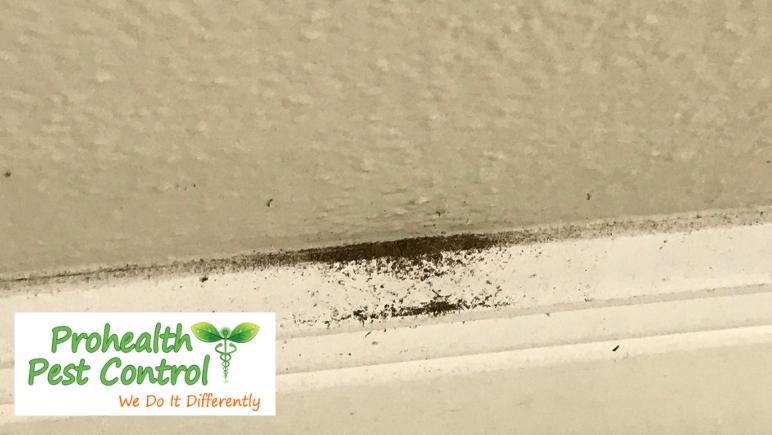Are there termites in your drywall? Here are a few signs to look out for.
With so many homeowners dealing with higher prices across the country and trying to pinch pennies whenever they can, finding out that you have a termite infestation can be absolutely devastating. If a termite infestation goes on long enough, you could be looking at thousands of dollars in repair costs because these insects will literally eat you out of house and home. One of the questions we’re often asked is whether or not termites can cause damage to drywall. Today, we’re going to answer that question (spoiler alert: yes, they can!) and then tell you some drywall signs of termites and how you can prevent these small insects from invading your home and wreaking havoc.
Why Termites Are Attracted to Drywall
Everyone knows that termites eat wood, but what you might not realize is that what they’re actually attracted to is the cellulose inside the wood. Paper is another source of cellulose, which is why termites will also be attracted to drywall since this popular material is made of plaster panels that are covered in paper. If you thought you were safe from termites because your home primarily uses drywall, then we have some bad news for you – your home is a target, too.
Signs of Termite Drywall Damage
Termites can cause a lot of damage to your drywall and other areas of your home, but you’ll first need to know what to watch out for. The good news is that termites leave behind several signs no matter what they’re eating. For today’s discussion, though, let’s concentrate on the drywall signs of termites:
- Discarded Wings — No matter where termites are swarming, they tend to leave behind discarded wings. If you find just a few small wings near your drywall, then look closer because you most likely have a termite problem.
- Tiny Holes — As termites feast on drywall, they have a tendency to kick out tiny holes where they can release their feces. Just keep in mind that these holes are very small and will more or less look like pinpricks.
- Hollow Drywall — To be fair, hollow-sounding wood is a lot easier to detect than hollow drywall. However, as termites do their thing, this may hollow out enough of the drywall where you’ll be able to notice if you knock on it.
- Termite Frass — This is the term used for termite feces and consists of small, granular, oval pellets. If you see something that looks like sawdust near your drywall, this could very well be termite frass.
- Mud Tubes — Just like with wood and paper, subterranean termites will also build mud tubes on the outside of drywall. These conduits offer shelter, protection, and easy travel to food and water sources.
- Head Banging — If termites in your drywall detect a threat, they’ll bang their heads against the wall to warn the others. This “head banging” creates a strange clicking sound that’s a sure sign of termite activity.
Ways to Prevent Termites in Drywall
No matter what types of materials your home uses, a termite infestation can be devastating. Luckily, there are several different prevention techniques that will help keep termites at bay.
Here are some quick tactics:
- Fill Cracks and Crevices — Like other insects and pests, termites will use cracks and crevices to slip inside your home, especially those found around your doors and windows. Depending on their size, you can fix the problem with caulk, spray foam, or weather-stripping.
- Remove Food Sources — You obviously can’t do much about the wood inside your home, but removing wood sources outside is a good tactic. You can start by taking out dead trees, keeping your vegetation trimmed, and moving wooden structures away from your house’s foundation.
- Remove Water Sources — You’ll also want to keep water sources such as ponds or fountains away from the edge of your house. If there are any puddles after it rains, be sure that you clear them out as soon as possible.
- Schedule Regular Inspections — It’s true when they say that an ounce of prevention is worth a pound of cure. Getting a professional pest control company to perform a termite inspection every 6-12 months will help ensure a small infestation doesn’t turn into a big one.
- React to the Signs — Whether you notice drywall signs of termites or any other indication of their presence, call a pest control company. The faster you react, the less expensive the problem will end up being in the long run.
Contact ProHealth if You Suspect Drywall Signs of Termites
ProHealth Pest Control can teach you the drywall signs of termites and other warning signs. If you have any questions about our services or are in need of termite control or elimination of other pests such as cockroaches, ants, wasps, mice, rats, mosquitoes, slugs, etc., reach out by calling (727) 310-0521 today to schedule a termite inspection today!





